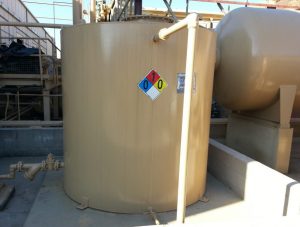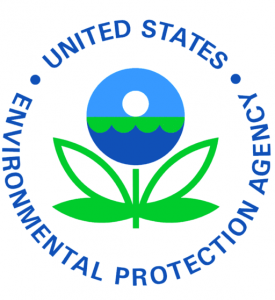 The EPA recently launched its Action Plan for per- and polyfluoroalkyl substances (PFAS). PFAS are a large class of manufactured chemicals that are very effective in several industrial applications, but have also posed risks to human health through drinking water sources around the United States.
The EPA recently launched its Action Plan for per- and polyfluoroalkyl substances (PFAS). PFAS are a large class of manufactured chemicals that are very effective in several industrial applications, but have also posed risks to human health through drinking water sources around the United States.
The Action Plan mainly uses the Safe Drinking Water Act (SDWA) to address the dangers of PFAS. The agency said it considered 120,000 public comments on what the Action Plan should include and how it should be implemented.
“It took groundbreaking efforts to develop this plan,” EPA Acting Administrator Andrew Wheeler said. “This is the first time we have utilized all of our program offices to deal with an emerging chemical of concern. It is the first time we have put together a multi-media, multi-program national research and risk communication plan to address a challenge like PFAS.”
The EPA said it will also start researching whether at least some of these chemicals should be regulated under other laws, such as the Toxic Substances Control Act (TSCA), Superfund, and the Emergency Planning and Community Right-to-Know Act (EPCRA).
The Risks of PFAS
PFAS were introduced in the 1940s and have several applications, including providing fabrics with stain and water resistance and giving nonstick properties to cookware. The durability of PFAS that has made it a desirable chemical contributes to its abundance in the environment and human body. Two PFAS, perfluorooctanoic acid (PFOA) and perfluorooctane sulfonate (PFOS), can cause cancer and reproductive, developmental, kidney, liver and immunological effects (PFOA) and thyroid hormone disruption (PFOS) in laboratory animals.
Although it can occur in multiple ways, including through soil and food consumption, the biggest concern of PFAS is its presence in drinking water. That’s why the primary goal of the Action Plan is to “initiate steps to evaluate the need for maximum contaminant levels (MCLs) for PFOA and PFOS.”
Implementing the PFAS Action Plan
The finalization of MCLs for PFOA and PFOS can take from five to 10 years. It could be several years after that before drinking water systems would be mandated to meet the MCL.
Some U.S. manufacturers voluntarily phased out production of PFOA and PFOS starting in 2000.
Other long-term actions under the EPA’s plan, which will take more than two years to implement, include:
- Taking steps to propose classifying PFOA and PFOS as hazardous substances through federal statutory mechanisms, such as the Conservation and Recovery Act (RCRA), TSCA and EPCRA.
- Establishing groundwater cleanup recommendations for PFOA and PFOS at contaminated sites.
- Creating toxicity values or oral reference doses (RfDs) for GenX chemicals (hexafluoropropylene oxide (HFPO) dimer acid and its ammonium salt) and perfluorobutane sulfonic acid (PFBS).
Short-term actions under the plan include:
- Establishing analytical methods and tools for understanding and controlling PFAS risk.
- Developing Significant New Use Rules (SNURs) under TSCA, which require EPA notification before chemicals are utilized in new ways that could result in human health and ecological concerns.
- Taking enforcement steps to help manage PFAS risk.
Reactions From the Industry
The industry is generally optimistic about the EPA’s new Action Plan. 3M, which introduced PFOS chemicals in the 1940s and took part in the phaseout in 2000, said that it welcomed the plan.
“We support regulation rooted in the best-available science and believe that this plan may help prevent a patchwork of state standards that could increase confusion,” 3M said in a statement.
However, some environmental groups think the Action Plan provides little action and is mainly for show.
“EPA has been promising to address the serious public health threat posed by PFAS chemical exposures for almost twenty years,” Rob Bilott, an attorney who has represented clients with PFAS claims, said in a statement released by the Environmental Working Group. “The last ‘action plan’ was released a decade ago—in 2009. Unfortunately, despite the promising public relations messaging released in connection with EPA’s latest PFAS ‘Action Plan,’ EPA is still not actually taking any concrete action on PFAS.”
Adapted from: EPA floats ‘groundbreaking’ PFAS plan, Enviro.BLR.com.
 Julia Norris is a California-based Certified Hazardous Material Manager, Certified Professional Environmental Auditor, and senior environmental protection specialist with 19 years of professional experience. She has expertise in a wide range of technical areas, including regulatory compliance auditing, air emissions inventories, SPCC Plans, drinking water sampling plans, SWPPPs, wastewater pretreatment programs, solid waste characterization studies, pollution prevention planning, hazardous material/waste management, storage tank management, and NEPA analysis.
Julia Norris is a California-based Certified Hazardous Material Manager, Certified Professional Environmental Auditor, and senior environmental protection specialist with 19 years of professional experience. She has expertise in a wide range of technical areas, including regulatory compliance auditing, air emissions inventories, SPCC Plans, drinking water sampling plans, SWPPPs, wastewater pretreatment programs, solid waste characterization studies, pollution prevention planning, hazardous material/waste management, storage tank management, and NEPA analysis.
 We are pleased to announce that James Abraham III has joined Aarcher Consulting as Environmental Protection Specialist, supporting ongoing operations and client services.
We are pleased to announce that James Abraham III has joined Aarcher Consulting as Environmental Protection Specialist, supporting ongoing operations and client services.
 Aarcher Consulting, an environmental consulting services firm for more than 25 years, announced today the promotion of AdriAnn Rode to Deputy Program Manager of the firm’s Denver Division operations. In this role, AdriAnn will support all aspects of ongoing operations and client services, including operational performance, personnel management, technical product quality, client satisfaction, and business development.
Aarcher Consulting, an environmental consulting services firm for more than 25 years, announced today the promotion of AdriAnn Rode to Deputy Program Manager of the firm’s Denver Division operations. In this role, AdriAnn will support all aspects of ongoing operations and client services, including operational performance, personnel management, technical product quality, client satisfaction, and business development.
 Aarcher Consulting is proud to have been selected to present at the prestigious 2021 EHS Operational Excellence Conference, hosted by the National Association for Environmental Management (NAEM), on March 10.
Aarcher Consulting is proud to have been selected to present at the prestigious 2021 EHS Operational Excellence Conference, hosted by the National Association for Environmental Management (NAEM), on March 10. Aarcher is pleased to announce that Sarah Connolly, PhD, MPH, has joined our team as Science Director, Infection Prevention. Dr. Connolly is a senior epidemiologist and infection prevention expert experienced in infectious disease research and infection prevention. As a former public health associate with the Centers for Disease Control and Prevention, Dr. Connolly responded to infectious disease outbreaks and provided infection control guidance in a variety of settings. She regularly conducted contact-tracing and risk-assessment counseling to prevent the spread of diseases. She also has experience comparing local surveillance systems for influenza virus and writing state investigation protocols for infectious diseases.
Aarcher is pleased to announce that Sarah Connolly, PhD, MPH, has joined our team as Science Director, Infection Prevention. Dr. Connolly is a senior epidemiologist and infection prevention expert experienced in infectious disease research and infection prevention. As a former public health associate with the Centers for Disease Control and Prevention, Dr. Connolly responded to infectious disease outbreaks and provided infection control guidance in a variety of settings. She regularly conducted contact-tracing and risk-assessment counseling to prevent the spread of diseases. She also has experience comparing local surveillance systems for influenza virus and writing state investigation protocols for infectious diseases. The Federal Aviation Administration (FAA) recently approved new procedures for changing the flight path of southbound turboprops to the west in particular wind conditions at Seattle-Tacoma International Airport (Sea-Tac). This process previously assigned headings to southbound turboprops manually. The new procedures automate the steps to concentrate low-flying planes over Burien, a city in Washington, after takeoff.
The Federal Aviation Administration (FAA) recently approved new procedures for changing the flight path of southbound turboprops to the west in particular wind conditions at Seattle-Tacoma International Airport (Sea-Tac). This process previously assigned headings to southbound turboprops manually. The new procedures automate the steps to concentrate low-flying planes over Burien, a city in Washington, after takeoff. The EPA recently launched its
The EPA recently launched its  Julia Norris is a California-based Certified Hazardous Material Manager, Certified Professional Environmental Auditor, and senior environmental protection specialist with 19 years of professional experience. She has expertise in a wide range of technical areas, including regulatory compliance auditing, air emissions inventories, SPCC Plans, drinking water sampling plans, SWPPPs, wastewater pretreatment programs, solid waste characterization studies, pollution prevention planning, hazardous material/waste management, storage tank management, and NEPA analysis.
Julia Norris is a California-based Certified Hazardous Material Manager, Certified Professional Environmental Auditor, and senior environmental protection specialist with 19 years of professional experience. She has expertise in a wide range of technical areas, including regulatory compliance auditing, air emissions inventories, SPCC Plans, drinking water sampling plans, SWPPPs, wastewater pretreatment programs, solid waste characterization studies, pollution prevention planning, hazardous material/waste management, storage tank management, and NEPA analysis. March 1 is the deadline for submission of EPCRA Tier II forms.
March 1 is the deadline for submission of EPCRA Tier II forms. Bob LaRosa, PE, is a professional environmental engineer with more than 30 years of experience. He has assisted Federal and private clients with a variety of environmental support projects, including multimedia compliance auditing, EH&S training and curriculum development, SPCC plan development, hazardous materials and hazardous waste management plan development, water system management plan development and implementation, and ESAs.
Bob LaRosa, PE, is a professional environmental engineer with more than 30 years of experience. He has assisted Federal and private clients with a variety of environmental support projects, including multimedia compliance auditing, EH&S training and curriculum development, SPCC plan development, hazardous materials and hazardous waste management plan development, water system management plan development and implementation, and ESAs. On Dec. 19, the Trump administration unveiled its new Federal Action Plan to Reduce Childhood Lead Exposures and Associated Health Impacts.
On Dec. 19, the Trump administration unveiled its new Federal Action Plan to Reduce Childhood Lead Exposures and Associated Health Impacts.
 Bonnie Wisniewski is an environmental management consultant with more than 20 years of experience helping clients work toward their environmental compliance, performance, and risk management objectives. She is a Certified Hazardous Materials Manager (CHMM), Certified Professional Environmental Auditor (CPEA), and AARCHER division manager in Denver. Bonnie can be reached at
Bonnie Wisniewski is an environmental management consultant with more than 20 years of experience helping clients work toward their environmental compliance, performance, and risk management objectives. She is a Certified Hazardous Materials Manager (CHMM), Certified Professional Environmental Auditor (CPEA), and AARCHER division manager in Denver. Bonnie can be reached at